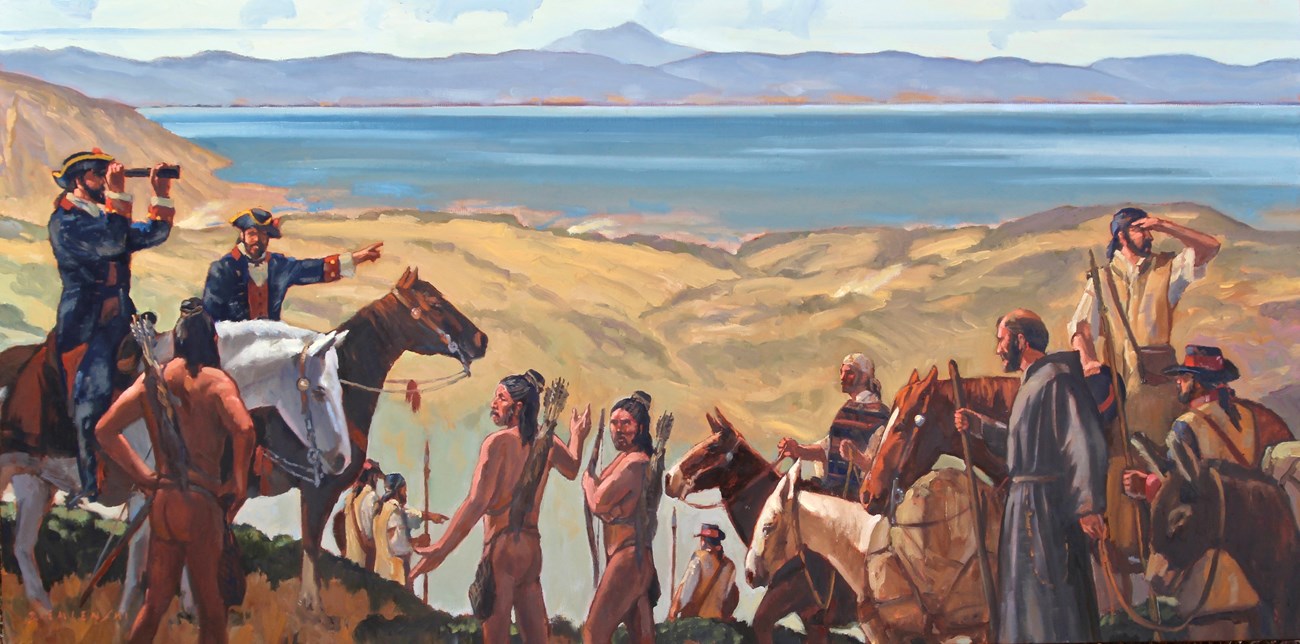Last updated: June 3, 2021
Article
Encounters with the Portolá Expedition

NPS
How would you greet a new culture?
The neighboring Aramai and Chiguan tribes of the Ramaytush peoples were each headed by sons of of the same headman and should therefore be considered one large tribe with two leaders. The Aramai headperson was originally from the Chiguan village of Ssatumnumo.
Spanish explorations in Aramai/Chiguan territory began October 28, 1769, when the Portolá Expedition arrived at the Chiguan village of Ssatumnumo. On October 31st the expedition reached the village of Pruristac in the San Pedro valley. The Aramai greeted members of the expedition warmly, inviting them to their village and presenting them with food. Some, no doubt, were wary of the newcomers.
In his diary of the trip1, Fray Juan Crespi described the San Pedro valley, site of the village at Pruristac:
"the small valley . . . has plenty of water in two small arroyos which unite to enter the sea. The valley has a great deal of reed grass and many blackberries and roses; there are a few trees in the beds of the arroyos, and some moderate-sized willows, but on the hills there was not a single tree to be seen except some on a mountain range which encircles this bay. Not far from the camp we found a village of very friendly heathen, who, as soon as we arrived, came to visit us with their present of tamales made of black seeds."

A passage from the 1774 Rivera y Moncada Expedition describes a friendly encounter between the natives and the explorers in more detail. The Chiguan brought “large baskets of thick atole and some large tamales made of their black seeds,” which the soldiers found flavorful. The “little chief” as he was referred to by Palou, most likely Chiguan headperson Cacegmne, brought his son of about twelve years to whom Palou offered “glass beads and other little gifts, for which his father effusively expressed his thanks.”2
The initial friendly encounters with mutual exchange of gifts disguised the ultimate intent of the Spanish exploration—colonization. Soon thereafter Franciscan missionaries and Spanish military would arrive, and the native peoples would be almost entirely eradicated from their native homelands. The Portolá Expedition marked the beginning of the end for the Ramaytush peoples and their culture.
Written by Jonathan Cordero
1 Bolten, Herbert, 1927. Fray Juan Crespi: Missionary Explorer on the Pacific Coast, 1769-1774.
2 Bolten, Herbert, 1926. Francisco Palou, Historical Memoirs of New California.
